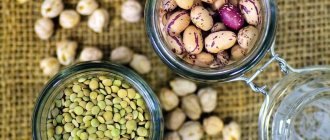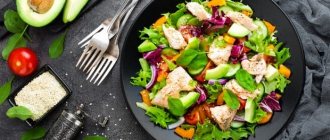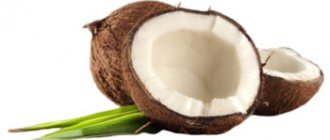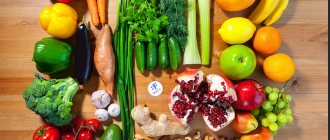The World Health Organization reminds us that to maintain a healthy body, you need to eat at least 400 g of fruits and vegetables per day¹. Adequate consumption of vegetables is one of the factors in the prevention of cardiovascular diseases, cancer and diabetes.
National recommendations in a number of countries (from the European Union and the United States to Indonesia and China) recommend eating 5 unsweetened fruits and vegetables daily. The Russian Ministry of Health also talks about 140 kg of vegetables and melons per year - or 383 g per day².
No. 2. Cabbage
Cabbage, which was a thing of the past for a while, is making a comeback today. She can safely stand on a par even with her relative - broccoli. Despite its availability and low price, cabbage is one of the healthiest vegetables.
Like broccoli, cabbage is high in vitamins K and C, as well as sulforaphane. Cabbage leaves contain a large dose of calcium, which enriches it with beneficial properties. Cabbage is a good source of carotenoids, which care for both the appearance of our skin and good vision.
Remember that cabbage, like broccoli, should not be too common in the diet of people with hypothyroidism. It should not be consumed in excess by people suffering from kidney stones. Like sorrel or rhubarb, cabbage contains oxalates, compounds that affect the formation of calcium oxalate deposits (aka “calcium stones”).
Cabbage is ahead of the leader in our ranking of healthy vegetables. Let's find out who's in first place.
No. 9. Garlic is a friend of immunity, heart and beauty
Garlic is an excellent natural immunity booster and a very healthy vegetable. These properties are due to the content of allicin, which has bactericidal and antifungal activity. Researchers report that, thanks to allicin, garlic extract can fight certain microorganisms and viruses (including, for example, Helicobacter pylori).
Allicin is considered primarily as a substance that supports the functioning of the cardiovascular system and reduces cholesterol levels in the blood.
Like pumpkin seeds, garlic is a vegetable that has been considered an aphrodisiac for centuries. It also contains sulfur compounds that have a positive effect on beauty, including the condition of hair and nails. It is recommended for women suffering from menstrual disorders, such as painful cramps. It’s not for nothing that garlic is included in the list of the healthiest vegetables.
But be careful - eating garlic in excess can cause bloating and abdominal pain, especially in people with sensitive guts.
No. 8. Beetroot – for heartburn and hypertension
This healthy vegetable contains red-violet dyes, which also act as antioxidants. Betaine is very important here, which in addition to protecting the body from free radicals has antibacterial activity. For this reason, it is better to choose the darkest vegetables to eat - those with the highest pigment content.
Benefits of consuming beets include the ability to lower high blood pressure and improve cardiovascular health. It is believed that this may be due to the effect of nitrates contained in these vegetables.
Beet
Beets, if consumed regularly, should help if you often suffer from heartburn and improve the functioning of the digestive system.
Have you heard that beets help with anemia? This is due to the content of folic acid, namely vitamin B9 and vitamin C. Both of them are important for the hematopoietic system - and their deficiency can cause anemia.
Of course, beets are one of the healthiest vegetables.
Attention - beets contain a lot of sugars, which can cause excessive fermentation in the intestines. Therefore, if you experience flatulence and/or diarrhea after drinking beets or juice, it is better to avoid it. Especially if you suffer from inflammatory bowel disease.
No. 4. Artichokes are not just for diabetics
Artichokes are very healthy and have unique nutritional value. They contain 20% of your daily dose of folic acid, vitamin K and C and sodium, magnesium, manganese and potassium, and smaller doses of other vitamins and minerals.
Their advantage is, first of all, the high content of antioxidants - compounds that slow down the aging process, protecting the body's cells from the effects of free radicals. Artichokes are one of the leaders in antioxidants among vegetables. Interestingly, under the influence of heat treatment, the content of antioxidants not only does not decrease, but even increases.
Artichoke
Artichokes contain inulin, which is one of the prebiotics - substances that help increase the content of beneficial bacteria in the intestines and improve the functioning of the digestive system. Due to their ability to regulate blood sugar levels, they have found use in nutrition for people with diabetes.
Cynarine is a compound that helps protect and repair the liver, while at the same time supporting body cleansing and digestive processes. Artichokes are rightfully included in the TOP healthy vegetables.
Rules of use
There are several rules for eating vegetables that will allow you to get the maximum benefit from them:
- Standardized consumption. The World Health Organization recommends eating at least 400 grams of vegetables and fruits daily (regardless of the quality composition).
- Time of receipt. It is better to eat vegetables in the middle of the day, together (or without) with other dishes. Eating fresh vegetables in the evening and before bed can overload the digestive system, and eating them in the morning on an empty stomach can aggravate chronic diseases.
- Heat treatment. Any thermal effect reduces the concentration of biologically active substances (primarily vitamins and antioxidants). Preference should be given to fresh vegetables. If it is impossible to avoid heat treatment, it is recommended to choose stewed, boiled, baked or steamed vegetables. The most undesirable option is fried and grilled vegetables.
- Compatible with other products. Any vegetables should not be consumed together with dairy products and fruits. Moreover, they go well with meat and fish.
- What can you cook from them? It is best to make fresh salads from vegetables. They are also perfect for making vegetable juices, smoothies, and cocktails. There are a lot of recipes and other various dishes.
- How to store for the winter? The most preferred preparations for the winter are frozen, pickled and canned vegetables.
Following simple rules will allow you to unlock the full beneficial potential of vegetables.
Vegetable rating
When compiling this rating, Ksenia took into account the amount of vitamins, nutritional value and the effect of products on the human body. The list of vegetables is arranged from more healthy to less healthy:
- Cabbage (white cabbage, cauliflower, broccoli, kohlrabi).
- Garlic and onion.
- Radish and turnip.
- Beets and carrots.
- Spinach and celery.
- Ginger, artichoke, asparagus.
- Zucchini, radish.
- Peas.
- Cucumber.
- Tomatoes, peppers, eggplants.
- Corn.
- Potato.
No. 7. Tomatoes – contain lycopene
Although tomatoes are more associated with Mediterranean cuisine, they are the most consumed vegetable in our country and can safely be called a very healthy vegetable.
Lycopene, contained in tomato, is one of the pigments belonging to the group of carotenoids. It is a very powerful antioxidant that protects cells from damage and, according to researchers, may also play an important role in the prevention of cancer, especially prostate, lung and breast cancer.
Tomatoes also contain lipoic acid, which supports metabolism, improves metabolism and regulates blood sugar levels. Tomatoes contain choline - recently considered a vitamin (B4), which supports memory, has a beneficial effect on the functioning of the nervous system, muscle contraction and ensures a good night's sleep. Due to their potassium and fiber content, tomatoes are recommended in the diet of people susceptible to developing cardiovascular diseases.
Tomato should not be combined with green cucumber. Fresh cucumber, like zucchini, contains an ascorbate enzyme that breaks down vitamin C.
No. 3. Spinach – rich in folic acid
Spinach is considered by many to be a very healthy vegetable. Indeed, spinach is a valuable addition to the diet. It contains a lot of vitamin K, carotenoids, beta-carotene, lutein and zeaxanthin and vitamin C. Spinach is useful due to its high content of folic acid (or vitamin B9). It is involved in the synthesis of two important neurotransmitters: serotonin and norepinephrine. Two more elements found in spinach are very valuable for the nervous system - manganese and magnesium.
Eating spinach improves brain function and calms the nervous system.
The quercetin it contains, one of the flavones (flavonoids), can mitigate the unpleasant effects of allergies and prevent the development of diseases such as atherosclerosis. Spinach is included in the list of the healthiest vegetables in many editions.
Remember that spinach is not recommended in the diet of people suffering from urolithiasis. The oxalates it contains promote deposits known as kidney stones. Therefore, spinach is not good for everyone.
Corn
Corn on the cob is a very healthy product. It contains all the essential vitamins and microelements. The disadvantage is that plants are treated with chemicals to grow and protect against disease. This significantly reduces the benefits of corn.
Canned corn contains a lot of sugars. Therefore, it is not recommended to use this product on an ongoing basis.
No. 6. Peppers – color matters
Peppers are a close relative of tomatoes and have a huge list of beneficial properties. Various peppers are one of the healthiest vegetables. Albert Szent-Gyorgyi, who was awarded the Nobel Prize for the discovery and determination of the chemical structure of vitamin C, isolated it from peppers. Already 100 grams of red or green pepper will provide us with more than a daily dose of this valuable antioxidant. Slightly less of this ingredient can be found in orange and yellow peppers. In terms of vitamin C content, pepper is even ahead of lemon.
Pepper
Peppers are also an excellent source of carotenoids, beta-carotene and lutein, which take care of our vision. Peppers are rich in flavonoids, especially rutin, which seals blood vessels and protects vitamin C from oxidation, enhancing its effects. Capsaicin is an alkaloid similar to the pungent taste of paprika, which naturally warms and supports metabolism. However, look for it in hot-flavored pepper varieties.
Remember - hot peppers should not be included in the diet of young children, the elderly and people suffering from certain diseases of the digestive system.
Interesting Facts
- Pomegranate fruits are borne from bright scarlet flowers that are found on small trees or shrubs. Each such plant yields about 50 kg of fruit per year.
- The digestive system of animals is not able to digest blueberry seeds. This helps the plant to reproduce - along with waste products, the seeds are carried over fairly long distances, where they fall into the ground, and over time, a berry clearing appears in this place.
- About 25% of the volume of an apple is air, so they do not sink in water.
- The contents of cherry pits are converted into hydrocyanic acid in the human body, so eating cherries with pits is strictly prohibited.
- A world record for eating bananas has been set - 81 bananas in 60 minutes.
- Persimmon can be called not only persimmon. It also includes names such as winter cherry, plum of the gods, Chinese peach, and heart apple.
- Peaches are called that not because they came to us from Persia, but because of the ancient name of the fruit - “Persian apple”.
- The weight of one kiwi very rarely exceeds the 100 g mark; for example, wild kiwi weighs only about 30 g.
- Despite the fact that all citrus fruits are the strongest allergens, lemons and grapefruits are the least likely to cause a negative allergic reaction.
- The pear can be considered a relative of the rose, since they both belong to the order Rosaceae.
- The beneficial substances in sauerkraut last up to 10 months, and it is also considered healthier than regular cabbage due to the abundance of vitamins. These factors allow you to consume the necessary substances throughout the year.
- The birthplace of carrots is Afghanistan. There it grew wild and was most often purple in color. Later, the familiar orange carrot appeared in Holland.
- Red tomatoes are healthier than yellow ones, as they contain more vitamins and nutrients.
- Pumpkin is so picky that it can grow in any corner of the Earth and in any conditions. Of course, except for Antarctica.
- Fresh spinach contains about 85-95% water.
- There are more natural sugars in onions than in apples or pears (up to 6%), due to heat treatment they acquire a sweetish taste.
- Bell pepper did not originate in Bulgaria. Before getting there, he traveled a long way from America through Portugal and Turkey.
- In the past, girls actually used beets as blush. This happened not only in Russian fairy tales.
- Peas are the first vegetable from which they began to make rolls and canned food in jars.
Despite the fact that eggplants come in different shades - from white to black, purple is still considered the healthiest.
No. 5. Pumpkin – for beauty and fertility
Pumpkin has always been considered a very healthy vegetable. Pumpkin pulp is a good source of carotenoids, largely beta-carotene - provitamin A. It contains vitamin C, B vitamins, magnesium, potassium, phosphorus and iron. Pumpkin improves the functioning of the digestive system and, in particular, the intestines.
Pumpkin seeds should not be thrown away; they also have beneficial properties. The Indians believed that they were not only an aphrodisiac, but also an excellent means of maintaining fertility. As it turned out, they were not mistaken. They contain a lot of zinc, and it takes care of both our appearance (primarily the condition of the skin) and the life expectancy of sperm. Another treasure of pumpkin seeds, selenium, has its share in the production of male sperm. In our country, crushed fresh pumpkin seeds have been used for years as a natural deworming remedy, especially against pinworms.
Today we know that this property is primarily responsible for the cucurbitacin they contain, a substance that has antiparasitic, antibacterial and antifungal properties.
This compound is a common component of dietary supplements for men suffering from benign prostatic hypertrophy.
Pumpkin improves the functioning of the cardiovascular system.
Pumpkin seed oil is a good source of cucurbitacin. It also contains omega-6 fatty acids, especially linoleic acid, which is essential for regulating blood cholesterol levels. Pumpkin oil is also rich in vitamin E, zinc and beta-sestrinol - it will take care of proper hydration of our skin and help maintain its elasticity. In a word
Carrot
This vegetable, popular in our cuisine, is the main source of beta-carotene, which is converted into vitamin A in the liver. Thanks to this, it prevents eye diseases, the development of cancer and the cardiovascular system. It has been proven that people who eat foods rich in beta-carotene are less likely to develop lung cancer, cervical disease, breast, colon and prostate diseases. Carrots are also an important component of a diet that supports skin rejuvenation and regeneration. Due to the large amount of vitamin C, it helps prevent various types of infections.
Broccoli
This cabbage variety comes from Cyprus. Broccoli has been widely used since the times of ancient Greece and Rome. Currently, broccoli is considered one of the most valuable vegetables for our health. It contains antioxidants with a strong anti-cancer effect, beta-carotene, vitamin C and substances that stimulate tissue and cell regeneration, the production of red blood cells and DNA synthesis.
Broccoli also contains a lot of calcium and coenzyme Q10, which increases the body's immunity. A diet rich in broccoli is known to be extremely beneficial for women. It helps prevent depression, relieves symptoms caused by tension before the onset of menstruation, and also protects against breast, ovarian and cervical cancer.
What should be the healthiest fruit?
How to choose the healthiest fruit? There are a couple of secrets:
- It should contain as many vitamins, minerals and nutrients as possible;
- It must be liked by its taste and external qualities;
- It should not cause an allergic reaction;
- It should, if possible, not be chemically treated;
- It should give the body a supply of energy and saturate it.
Many fruits and vegetables comply with these rules, so you should choose the ideal fruit for yourself individually based on its description and beneficial properties.
Cooking methods for every day
Having learned about the benefits and contraindications for eating vegetables, we will consider inexpensive options for preparing them. In addition to the traditional beetroot vinaigrette, many other salads are prepared, and they are also baked whole.
Whole roasted beets
To do this, wash the beets (5 medium ones) and let them dry. Mix 2 kg of salt with finely chopped rosemary (5 sprigs). Pour the first half of the mixture into the pan, completely covering the bottom. Place the beets and cover with the other half of the mixture. Keep it in the oven for an hour and a half, then dig up the field and cut off the top. Place a piece of beetroot on a plate and place a piece of vegetable oil on top of it.
To prepare a spinach dish, you need to wash it (500g) and dry it with a napkin. Pour 200ml of cream into a saucepan, add nutmeg and a pinch of salt, heat the mixture on the stove for 10 minutes. Stir frequently while doing this. Remove from heat. Cut a clove of garlic and place it on a fork. Pour 2 tbsp into the pan. olive oil, turn up the heat.
Spinach dish
Throw spinach leaves into it, add salt, and stir with a fork with the planted garlic. When the vegetable has reduced, place the contents of the pan in a colander to drain excess liquid. Now you can add cream, salt and pepper and serve hot.
Pumpkin and carrots can be combined in one healthy salad as a breakfast option. To prepare it, wash the vegetables, peel them, grate them (150 g each). Cut the washed apples (150 g), remove the seeds and grate as well as 50 g of cheese. For dressing, mix 2 tbsp. olive oil with 2 tbsp. lemon juice and 1 tbsp. mustard beans. Lightly beat it and add to the salad.
Broccoli soup is prepared very quickly. Fry a finely chopped onion in olive oil (2 tbsp), add to it 2 diced potatoes, 200 g of broccoli, 1 finely chopped carrot, a clove of garlic, pour three glasses of water. Cook the soup for 30 minutes, then turn off the gas and cool. After this, pour the mixture into a blender and grind until pureed. The soup can be returned to the pan and reheated.
Broccoli soup
Eggplants and zucchini are used in the preparation of the well-known ratatouille. Peel all the vegetables, place 2 bell peppers in the oven for 20 minutes. Pour boiling water over 2 tomatoes for 2 minutes and remove the skins, then cut into cubes. Finely chop one onion and 2 cloves of garlic. Pour 2 tbsp into the pan. olive oil, fry them, add tomatoes, basil, thyme, bay leaf.
Finely chopped pepper and salt are baked in there. It was all about the sauce. Now cut one eggplant, zucchini, zucchini and 3 tomatoes of the same diameter. First pour the sauce into the mold, and then arrange the vegetable slices in a mixed order. Brush the top with olive oil, sprinkle with spices and herbs, cover with foil and place in the oven for an hour and a half.
Then remove the foil and return it back for another half hour.
Eggplant
This plant is often used in Asian and Mediterranean cuisine. It appears relatively rarely on our tables. Eggplant is rich in antioxidants, fiber and potassium. According to doctors, having eggplant in a regular diet reduces the risk of developing dementia and stroke. It is a valuable source of vitamins (A, C, B), as well as potassium, iron, calcium and phosphorus.
Its purple peel contains anthocyanins with antifungal and antiallergic properties. Eggplants can reduce blood pressure and improve the condition of blood vessels. An additional advantage is the low calorie content of this vegetable, because 100 grams contain only 20 kcal.











